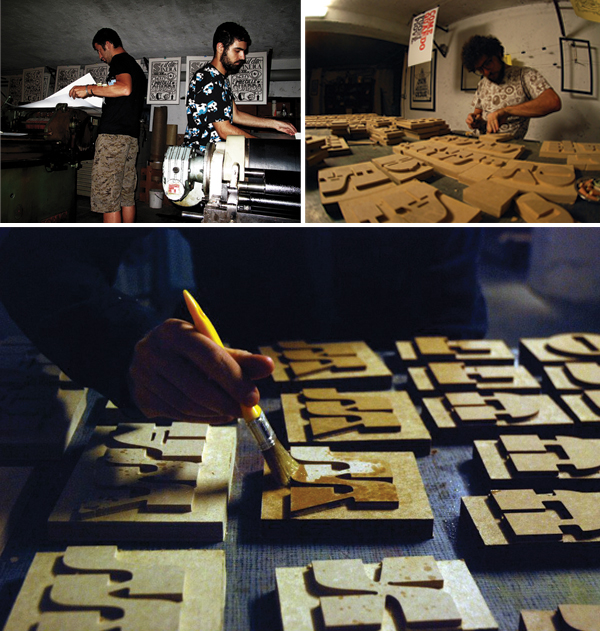[ Installment 2 ]
We are “pulling up a chair” with Don Black, a Northern neighbor from Scarborough, Ontario.
Don is winding down his business after 50 years and the dismay and sadness of that is still a jolt to our letterpress community.
A warehouse of heavy metal and wood is not an exaggeration describing Don’s business. He and his family, particularly his son, Craig, have helped and talked with thousands of printers and artisans over those decades. Sadly, Craig passed away last year and Don is eyeing a quieter life.

Boxcar Press: It’s a delight to hear your stories. Let me first say, thank you for your kindness to me and all the others who were at one time new to letterpress printing. It must be a screwy time right now with the business..
Don: We are super busy with the closing of our business. Our General Manager Albert Kwon is invaluable in this endeavour.
Boxcar Press: Let’s go back to the beginning. Is there one defining moment that you can recall or point to that was the start of your printing career?
Don: The defining moment that I knew I wanted to make Printing a career occurred when I went for a tour of the Globe & Mail (newspaper based in Toronto, Canada) with my uncle who worked there. When I saw all the equipment in the Composing Room I decided this was for me.
I started to work at the Globe & Mail before I was 17 doing all the delivery jobs etc. Then I served a 6 year apprenticeship as a Linotype Machinist.
Boxcar Press: Tell us about mentors or printers that set you on a particular path?
Don: While working there was a machinist, Ed Hull, who helped me immensely by guiding me and tried to keep me on the right track. I think about him often and am super thankful for all he did to help me.
While working as an apprentice at the Globe & Mail, the Credit Union ran a contest for the best designed Printing job. This was open to seven Printer apprentices, but no mention about Machinist apprentices. I questioned them and received permission to submit an entry. Believe it or not, I won the prize of $25.00 I still tease my friend today, who was a printer’s apprentice, that a machinist apprentice beat a Printer apprentice at the Printer’s trade.
Boxcar Press: Where was the next stage in your career?
Don: I left the Globe & Mail in 1964 when the three Toronto newspapers went on strike. I started to do freelance service on letterpress equipment.
Then I received the Canadian dealership for Letterpress Equipment for Canada from Canadian Linotype Company. This was a big help as it opened doors coast to coast and helped me to meet many great people.
After I started my business in the 1980’s I became acquainted with an equipment dealer in Cleveland, Jack Boggs. He bought and sold all kinds of printing equipment. Over the next 30-40 years, we did a super amount of business. He liquidated printing shops that were closing or upgrading equipment. I purchased many truckloads of equipment from him. It was great as it gave me access to things I could not find in Canada. We still do business today and without a doubt, he is a big reason we have been successful.
In the early 1970s, something strange happened when the Globe & Mail decided to update a lot of equipment. I purchased most of the Composing Room which had some great equipment but also included were eleven machines which were now outdated. They had originally cost approximately $25,000.00 each, less than 10 years before. The value in scrap was less than $500.00. We made a large copy of the cheque and mounted it with the eleven nameplates from the machines. It has become quite a conversation piece that we still have at the office today.
Boxcar Press: What does the legacy of Don Black Linecasting mean to you as you slowly wind it down.
Don: I would say it’s the fact that we have been in business more than 50 years, conducted and did business with wonderful people all over the world and helped to keep Letterpress alive.
Boxcar Press: You handled so many of pieces of equipment, they can’t even be counted. Can you tell us about a press you remember fondly?
Don: We have a Baby Reliance Iron Press which we purchased from a customer in Winnipeg. It is a beautiful press and I could have sold it many times, but Craig, my son, always said don’t sell this press. Now that he is gone and we are closing down, I am going to let it go to a collector that had talked to Craig. I know Craig would be happy that it is going to someone who will treasure it.
Boxcar Press: Thank you Don for those great memories. We’ll talk more soon. Can you leave us with your favorite printing saying?
Don: Go with the Best! Go Intertype.
Time is ticking down on getting equipment from Don, give him a call or email to ask what he has and chances are, you’ll get a nice deal. www.donblack.ca







